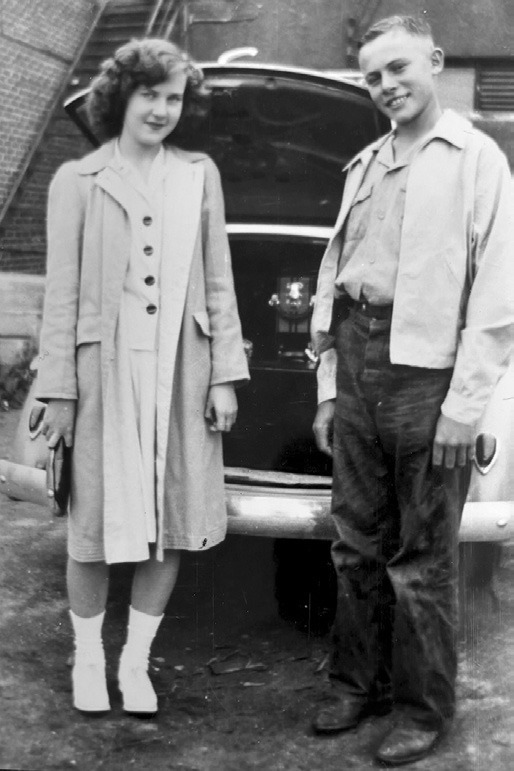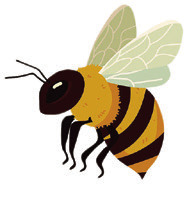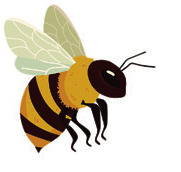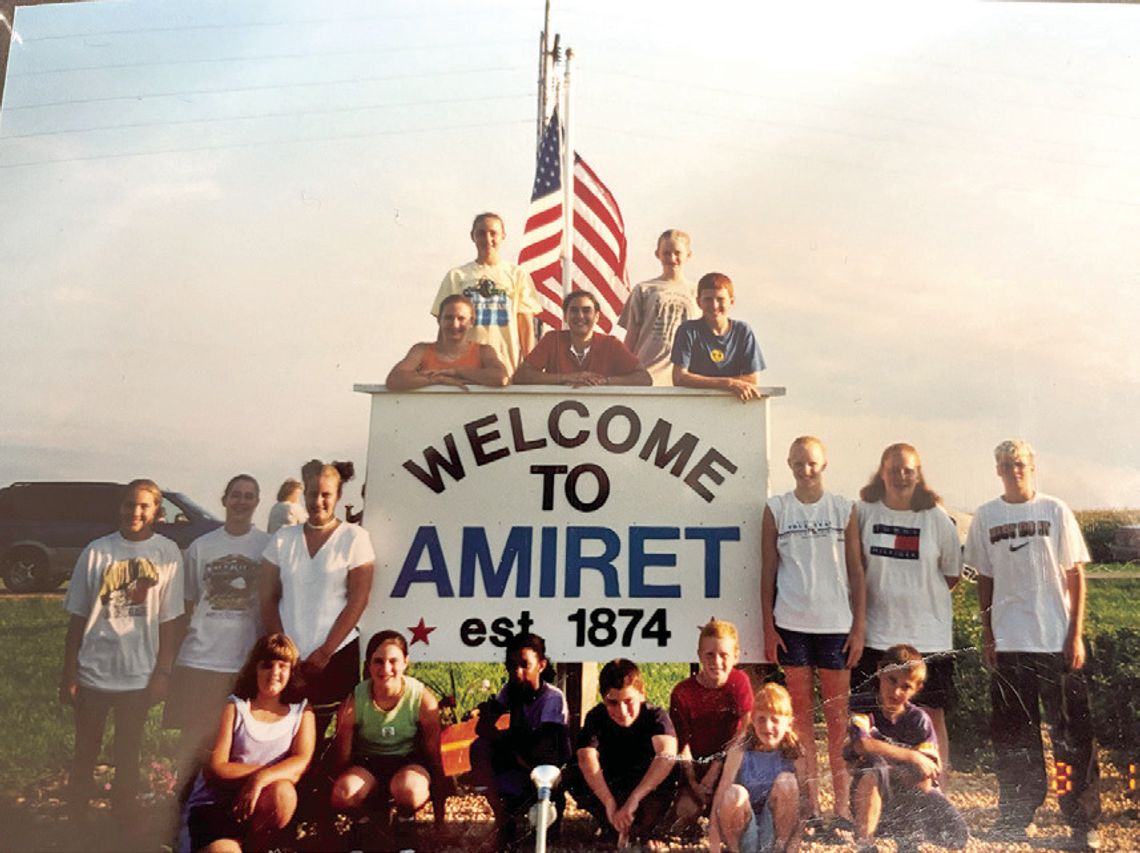NATIONAL 4-H WEEK
Farm tours may be a thing of the past, but even though times have changed, the Amiret Busy Bees continue to hold up their tradition, and in ‘26 will celebrate a century of service
DURING THE 1980s, THERE WERE AS MANY AS NINE AREA 4-H CLUBS THAT ANNUALLY CELEBRATED NATIONAL 4-H WEEK.
Whether it be the decline of family farms and populations, or smaller enrollment numbers across the board, only three of those — the Amiret Busy Bees, Springdale Climbers and Currie Poco-a-Poco — are still going.
And next year, the hard-working Bees will celebrate their 100th year. Considering the Busy Bees group is the last of only three standing in the immediate area, this centennial celebration will inspire more pride than ever.
“We’ve not only survived … I’m still thankful that kids today have access to 4-H,” said Elise Lanoue, who joined 4-H and the Busy Bees as a child, raised children through the program and along with the likes of Greg and Daryls Tanghe, Carol Weedman, Jolynn Johns, Randy and Patty Lessman, Deb Buysse, Marcia Luckhardt and Cheryl Lenertz, served as a leader for 12 years. “Garvin Hi-Fliers stopped, Tracy Comets stopped. The fact that (the Busy Bees) is as big as it is, is just wonderful.”
The Busy Bees’ history is full of names of those who were there from humble beginnings — people like Annie Glynn, Opal Trout, Donald Bair and Ada Roudabush. It’s those folks who got things going and set a standard that is being upheld today.




And it’s folks like Doris Templeton, a club leader from 1971-1986, who have inspired today’s leaders to uphold the Busy Bees’ tradition while living a much more hectic lifestyle where things just aren’t as simple as they used to be.
“We wouldn’t be here today without them,” said Kim Roggatz, a former Busy Bees club leader who remains very active. “We probably have it easier than they did.”
As hard as they work, today’s generation of leaders fully appreciate everything their predecessors did during an era where there were no microwaves and everything came straight from the kitchen.
“We talk about how when Kathy Brockway was a leader … it took four of us … and we couldn’t keep up with what Kathy did,” said Katie Lanoue, who along with Jeanne Knott are the current Busy Bees club leaders. “We had to divide out everything Kathy did between our individuals, and we struggled.”
But the Busy Bees has stood the test of time by adapting with an ever-changing culture. The club has actually flourished over the years because of attrition. The shuttering of other local clubs meant kids over the years have been funneled into the world of the Bees.
“I’d like to think that the Busy Bees were so good, the other ones couldn’t keep up,” Elise Lanoue says with a proud chuckle.
To Roggatz, the influx of kids and adults into the program has only served to bolster it because those joining — be it in the past, or today — are good people with similar strong values.
“Those other clubs, they got down to just a couple families, so they came on over,” Roggatz said. “Growing up, the Comets and Busy Bees were very much rivals in a friendly way. Softball tournaments, Community Pride, booths — we always had to beat the Tracy Comets! We went to school together, we were all friends, but you either belonged to the Busy Bees, or you belonged to the Comets.”
It was 1904 when 4-H clubs were first founded in Minnesota, succeeding Corn Clubs and Corn Contests. Less than 20 years later, the Busy Bees were born Two of the busiest of Bees from the early days, Alita Lenertz and Dorothy Dunteman, were special guests at the 50th annual Amiret Busy Bees Ice Cream Social in 2023. The event has been held in the Amiret Town Hall since 1973. Sans running water, the town hall has always served as the Busy Bees’ June gathering place, a nod to the club’s commitment to its sense of place and heritage.
And it is the Lenertzes and Duntemans of the world who unknowingly at the time paved the way for what is the club’s most long-standing traditions.
“Alita tells stories about the ice cream social and how they made homemade potato salad and baked all their own buns … we’re just in awe of that,” Katie Lanoue said. “We’re just trying to continue that.”
Cooking and 4-H went hand-in-hand for Lenertz, who passed away recently. Katie said she was able to have a conversation with Lenertz before she passed, and the Busy Bees’ matriarch shared stories of some of her experiences in a much different era.
“Members would come to her house, and she would teach them how to make something, and everyone got to take something home to eat,” Katie said of a memory Lenertz shared. “She talked about how the meetings were at their homes; and there were farm tours; there was a funeral procession of cars for the tours — something we still try to do. That’s an example of how change has affected the program.”
While the growth of the Busy Bees is typically measured in its number of kids, today’s leaders agree that it’s the motivational support from the parents that keeps the club prosperous. Parental support and dedication is something that many agree became lost on the clubs that didn’t survive.
“It’s definitely the parents,” Roggatz said. “Whether you’re a club leader, or do a booth, or take on a project, it’s the parents. It’s not just a kid thing.”
Katie Lanoue, who didn’t take part in 4-H as a child but is well-invested today with four Busy Bees kids, said like with most things involving children, leadership starts at home with parents who stand behind what the organization represents.
“They aren’t happy unless their kids are involved,” she said. “They want their kids to give the necessary effort, not just be there.”
The culture of 4-H as it is known today underwent a shift years ago from home-based things like teaching kids skills such as how to raise animals and can food to serving their communities.
“We’re a service club now,” said Roggatz. “You don’t find many services clubs anymore with kids going out to clean road ditches and those types of things. I know as a parent sometimes I think, ‘Oh, great we get to go clean ditches again — even the kids feel that way — but when we’re done, it’s just a rewarding feeling. Everyone comes together and has a great time doing it.” But how do parents keep their kids motivated in a time where most of them are burning their respective candle at both ends with school and myriad activities they’re involved in? Katie Lanoue said her children realize they are the ones charged with continuing a family legacy that has been created throughout the years. “For my kids, a lot of it is that they know this is how their dad was raised,” she said of her husband, John. “I wasn’t involved in 4-H, and I really look back and think I missed out on a lot. I know my kids love doing things that their dad has done and being a part of their dad’s club. And it’s the friendships that they have. It’s not hard to say, ‘Hey, it’s Sunday and we have a meeting’ because they know their buddies are going to be there.”
From a parental perspective, Katie Lanoue believes community service brings the kids together and teaches them work ethic. But more than that, she feels that the kids actually enjoy it.
“It’s not something we’re forcing them to do,” she said. “They look forward to the opportunities to serve people, they really do. The last few years, every time (Katie’s daughter) Caroline fills out her record form when it says their favorite thing, it’s always one of our Community Pride projects. Always.”
Motivation doesn’t just come from mom and dad, however. With county fair success being the ultimate goal for 4-Hers, the kids know that to be an active member and have the ability to take part in showing their animals and other projects, they’re required to take part in philanthropic activities throughout the year.
“We work hard so we can play hard at the fair,” said Roggatz. “It’s fun to see the kids enjoy (the fair) so much.”
“They put in the effort, and they get to realize the benefits,” Lanoue added. “That’s their reward.”
Elise Lanoue said since the kids are outside of school walls when they undertake 4-H activities, being involved opens doors for them to foster their social presence, and pursue, create and build on their already-existing relationships with their peers.
“They’re friends that they’re not on a sports team with,” she said. “It’s a whole different set of friends. When my kids started, we weren’t consolidated, so my kids got to know a lot of Milroy kids that they would never have known otherwise.”
“Your 4-H friends are a special group of friends,” Katie said. 4-H clubs like the Busy Bees — which today consists of nearly 70 members — Roggatz said, have a way of bringing members young and old back to a simpler time, when kids’ schedules weren’t cluttered with so many things that force families to constantly race to this game or that practice.
“Life just slows down for a minute,” she said. “Maybe that’s what people are looking for and find in 4-H. You don’t have to have the best of the best all the time, you don’t have to be the smartest kids in school. You can just be yourself.”




